Psychonautical by Erik Davis
If Alex Grey were a superhero, his mutant power would be mystical X-ray vision. The Brooklyn artist's electric, densely layered, and deeply psychedelic images represent human bodies as skinless, semi-transparent forms that overlay flesh and blood, bones and nerves, rainbow chakras, and cabalistic glyphs. These anatomically detailed paintings are so exact they seem like New Age medical diagrams, but the images amplify as much as they dissect, paradoxically intensifying the reductionist clarity of the scientific eye into a blazing, luminescent mysticism.
Sacred Mirrors, Grey's previous coffee-table book, enshrined his most paradigmatic work: a series of ornately framed paintings that progressively build up the various biological systems and spiritual layers that, he believes, compose our body-minds. Although Transfigurations covers some similar ground, Grey's new book packs a heftier punch. As befits an artist who derives his authority from his own experience, Transfigurations presents a crucial overview of his artistic and personal evolution. Following a morbid adolescence, Grey spent much of the '70s working in a morgue even as he threw himself into brutally self-abnegating performance pieces. He hung himself next to corpses, flopped around in feces, and once upchucked a plateful of spaghetti onto a human brain. A series of visionary experiences and a synchronous encounter with LSD and his life partner, Allyson, arrested Grey's dark catharsis. Exploring psychedelics, meditation, and ritualistic performances, Grey developed his vibrating, iridescent cartography of the self.
Psychonauts and hardcore meditators will shudder in recognition at some of Grey's images, which capture the density of psychedelic perception while gesturing toward a luminosity that lies beyond all images. But as far as the gallery world goes, Grey's spiritual literalism and lack of irony make him an outsider, a creature of Juxtapose rather than Artforum. The clarity and punch of his work also push it uncomfortably toward illustration. Grey's images look good on rave flyers, hard-rock CD covers, and LSD blotter paper material that Transfigurations wisely includes as evidence of his popular appeal. Nonetheless, Grey is profoundly and self-consciously rooted in visionary painting, a mode he characterizes as "a bastard tradition in Western art." In his piece Painting, the hovering spirit-faces of Michelangelo, van Gogh, Kahlo, Tchelitchew, Delville, and Blake surround an artist at his easel. Besides defending the perennial tradition, Grey has also studied under the Dzogchen master Namkhai Norbu for decades, and the Clear Light pervades his work. Grey's Nature of Mind, for example, presents a classic allegory of spiritual awakening, fusing the artist's trademark rainbow bodies with vajras and mandalas lifted from Tibetan tangkas.
But Nature of Mind is not one of Grey's most powerful works, because he is not so much a psychopomp of Eastern wisdom as a visionary bastard of the West. And that means joining a troop of idiosyncratic mystics marked by conflict, madness, and official rejection. Too much of the writing in Transfigurations, including bits by Grey himself, blunts the originality of his work by resolving its tensions into pat metaphysical frameworks. The psychotherapist and Joseph Campbell biographer Stephan Larsen, for example, weaves the loose ends of Grey's art into the rainbow flag of global spirituality, a paradigm in which yoga, Vajrayana visualizations, and Amazonian jungle juice all offer relief from modern ills. Such universal healing is indeed Grey's mission, and I wish him luck. But for me at least, his most spiritually stimulating work is the weird shit, not the stuff that harmonically converges.
Thankfully, Transfigurations includes oddities like fucking dragons, mushroom-munching ape-men, and Boschean insects feeding off the wan energy fields of depressed people. These creations remind us that Grey owes as much to Joe Coleman's horror shows and Robert Williams's cartoon psychedelic hysteria as he does to Chinese acupuncture charts. But they also suggest his visionary authenticity. No mere psychedelic illustrator could create the World Soul, a sculpture based on a vision of a "four-faced hermaphroditic self-copulating dwarf with wings, claws, and a fish's tail." A vision that came to Grey while waiting for the F train.
It may be that high weirdness is the only route left open to sacred forces these days. After all, Grey is making spiritual art at a time when the global circulation of images has leeched the aura from all iconography even as it provides the opportunity for major metaphysical collage. Grey's remarkable Cosmic Christ, for example, features a vaguely malevolent galactic elf whose body encompasses myriad panels of images: Joseph Smith, Julia Butterfly Hill, the Starship Enterprise. But Grey also knows that symbols fall miserably short of the mark. And so the crown of his apocalyptic Christ leaves the familiar behind, unfolding into an intensely hued, alien wormhole that works like a tractor beam, drawing us up and out, or deep within, or wherever the twain shall meet.
Featured Art 'Nature of Mind: Panel 4' by Alex Grey
